Witness Snowfall In Badrinath In 2026
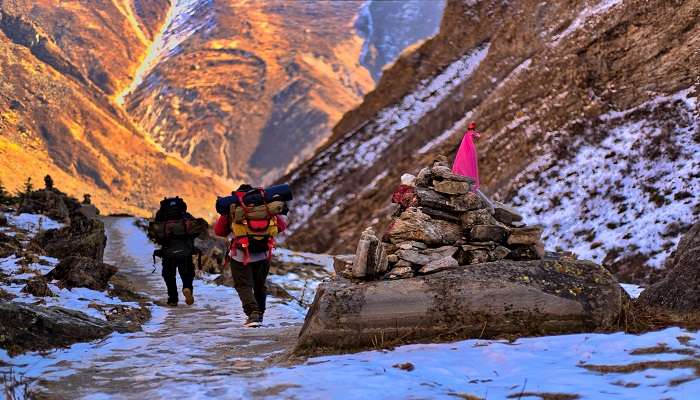
Snowfall in Badrinath temple is a pleasing sight to watch for tourists. The Badrinath temple, or the Badrinarayan temple, is one of the famous Char dams in India. The other three are Yamunotri, Gangotri and Kedarnath. Located in the town of Badrinath in Uttarakhand, Badrinath is a prominent Hindu pilgrimage site in India. Situated amidst the Himalayas, snowfall in Badrinath is a distinctive sight to look for. The Badrinath temple attracts thousands of Hindu devotees every year. Located at a height of 3100 m above sea level, the Badrinath temple was built by Adi Shankaracharya in the 8th century.
Badrinath Temple And Its History

According to the Indian religious scriptures and mythological legends, there is no direct evidence of the Badrinath temple and its history. According to some historical evidence, there was a Buddhist shrine where the temple now stands. Some say that it was placed there during the reign of the great king Ashoka when Buddhism spread worldwide. The temple was a Buddhist shrine until the 8th century when Adi Shankaracharya revived it and converted it into a Hindu pilgrimage site. The architecture of the temple resembles a Buddhist vihara. Adi Shankaracharya resided for about six years, from 814 to 820 CE. Out of those 6 years, he spent 6 months in Badrinath while the rest of the period was spent in Kedarnath.
Hindu followers firmly believe that Adi Shankaracharya discovered the deity of Badrinath in the Alaknanda River and placed it in a cave near the Tapt Kund hot springs. Another story associated with the Badrinath temple is that Adi Shankara expelled the Buddhists in the region with the help of the Parmar king Kanak Pal. The king’s successors governed the temple and favoured the villages of the kingdom to meet the temples’ expenses. The earnings from the villages were used to feed and accommodate pilgrims who visited the temple.
Also Read: Places To Visit In Badrinath
The Route To The Badrinath Temple
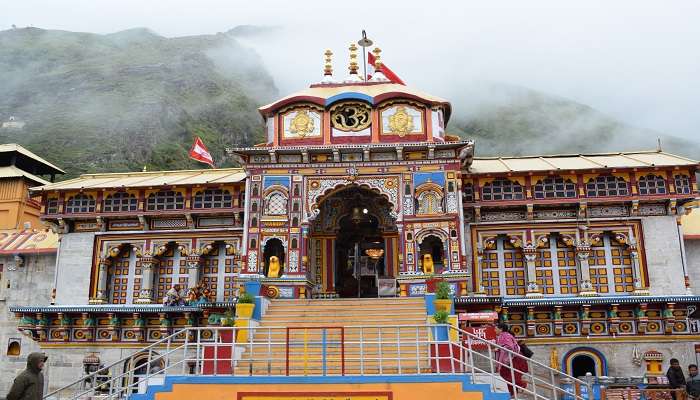
Mystery and mythology prevail at the Badrinath temple in Uttarakhand. Tourists cannot visit the temple during the winter when there is prominent snowfall. Lord Badrinath resided at the Narsingh temple at Joshimath during that time. The senior and most acknowledged priests of the Badrinath temple decide the opening and closing dates of the shrines of the Char Dham. It is important to ensure the correct opening and closing dates for Char Dham to avoid any inconveniences.
The route to this famous temple of Badrinath goes through rugged terrains and picturesque views of the Greater Himalayas. Badrinath temple is well connected to all cities of India through all means of transport. The nearest airport to the Badrinath temple is the Jolly Grant Airport in Dehradun, which is 317 km from the temple. The nearest Railway station is Rishikesh, at a distance of approx 300 km from the temple. Helicopter services are also available from Dehradun to Badrinath Dham. The trek to the Badrinath temple starts from Govindghat. It is the starting point for the trek to Sri Hemkund Sahib and the Valley of Flowers. The temple remains open six months a year and closed during winter due to heavy snowfall in the Badrinath Dham.
6 Places To Visit In And Around The Badrinath
Badrinath is a most auspicious place and one of the Char Dham. People visit Badrinath yearly to seek blessings from God Vishnu. During the snowfall, there are various things to see in and around the temple.
1. Tapt Kund
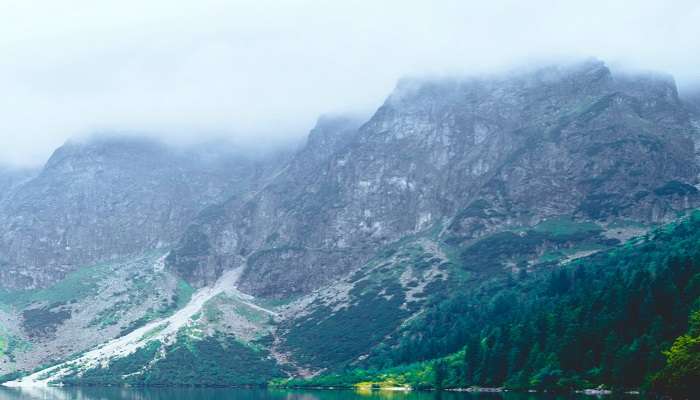
The Tapt Kund is a thermal water spring in the Badrinath Dham. The snowfall in Badrinath is also visible through the Tapt Kund. Bathing in the hot water is a ritual. Tapt Kund is situated just at the entrance to the Badrinath shrine. A common belief is that the sulfur waters of the spring have a healing property. The hot spring waters absorb all the sins of the devotees. Tapt Kund is one of the holy places in the Badrinath Dham.
Related Post: Places To Visit In Uttarakhand In Summer
2. The Badrinath Temple

According to Hindu legends, Lord Vishnu went through severe penance. His divine companion, Goddess Lakshmi, turned herself into a Badri tree to save him from extremely bad weather conditions. This is why the magnificent Badrinath temple is an important Hindu pilgrimage site. The temple is at an altitude of 3133 m above sea level. The mountains of the Greater Himalayas appear to touch the heavenly sky, and it is believed that the gods live behind these snow-covered peaks.
3. Charan Paduka
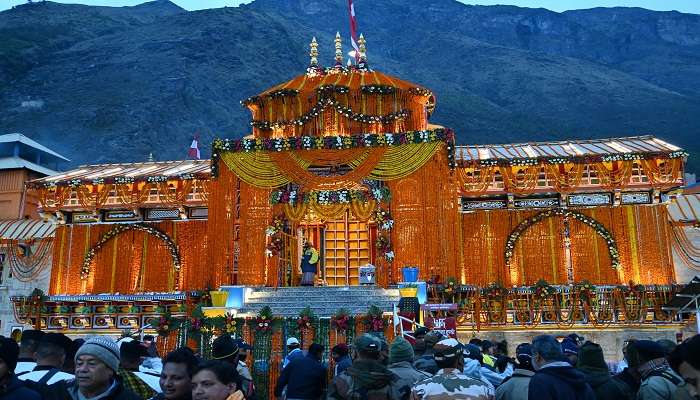
Embark on a journey to witness snowfall in Badrinath at this spot of Charan Paduka. Located 3 km from the main temple, Charanpaduka has the imprints of Lord Vishnu’s feet. Narrow terrains and steep village roads lead to the entrance of Charan Paduka. Tourists can witness the mesmerising views of the glaciers and the snow-covered mountains. About 300 m from the Badrinath temple, the tourists can see a signboard indicating the birthplace of Lord Vishnu.
Related Post: Places To Visit In Uttarakhand In Winter
4. Neelkanth Peak
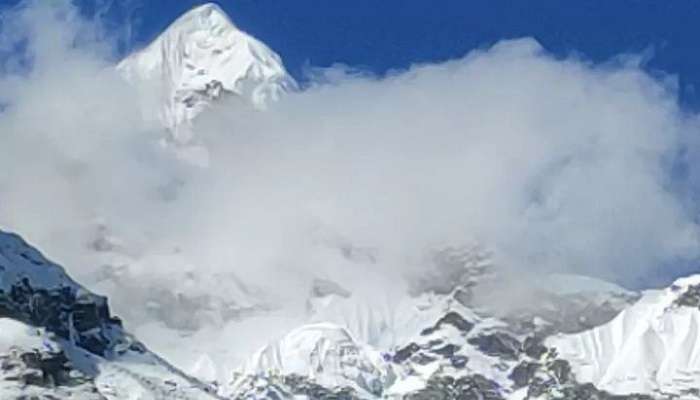
Marvel the incredible views of Neelkanth Peak in snowfall, which appears to be a blanket of white sheets. The peak is also known as the ‘Queen of Garhwal’, and is named after Lord Shiva. The mountain is among the famous summits in the Garhwal Himalayas, with an altitude of 6,597 meters. Here, you can also sightsee Khirao Ganga River, running from the south of the peak.
5. Mana Village

Step into the last Indian village that lies on the Tibetan-Chinese border. It is perched on the banks of River Saraswati and is among the famous places to visit in Badrinath. As the village is nestled amidst the magical Himalayan ranges, many tourists often visit it. Here, you can explore the local shops, drive up the mountains, hike, and taste authentic delicacies.
Related Post: Things To Do In Badrinath
6. Bheem Pul

Bheem Pul in Mana holds a rich historical significance as it is believed that it was built by one of the Pandav siblings, Bheem. Some people also believed that the natural bridge was made by a stone tossed by Bheem between the mountains to cross them. Overall, Bheem Pul, the stone bridge, is a sight to behold. The bridge is about 3 kilometer away from Badrinath and is opposite to Vyas Gufa.
6 Places To Stay In Badrinath
Make your vacation relaxing and memorable by choosing the best accommodation options in Badrinath. Take a look at some of the best places to stay in Badrinath below:
1. Hotel Mount View Annexy

As Joshimath is near Badrinath, you can plan to stay at one of the finest accommodations- Hotel Mount View Annexy. The warm hospitality, polite staff, comfortable rooms, and modern amenities make this place among the best accommodation choice. Not to mention quick services at your doorstep. So, if you plan to visit Badrinath in winter or summer, Hotel Mount View Annexy is your ideal choice.
Location: Shankaracharya Math, Upper Bazar, Joshimath, Uttarakhand 246443
Related Post: Badrinath In June
2. Tapovan Resort
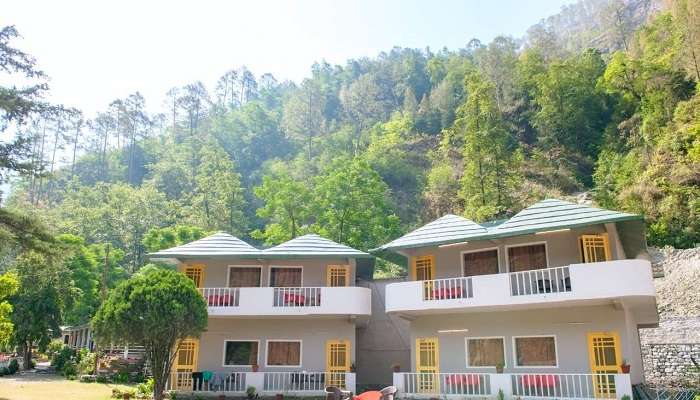
Nestled amidst rolling hills, Tapovan Resort is among the finest properties in Badrinath. The scenic views from your balcony add a new dimension to your overall trip experience. Not to miss out the polite staff, effective management, seamless services, and contemporary amenities. Whether you are coming with family or friends, this place is the ideal choice for accomodation in Badrinath.
Location: NH 58, Badrinath Rd, Birahi, F-2, Uttarakhand 246472
3. Blue Poppy Swiss Cottage Camps
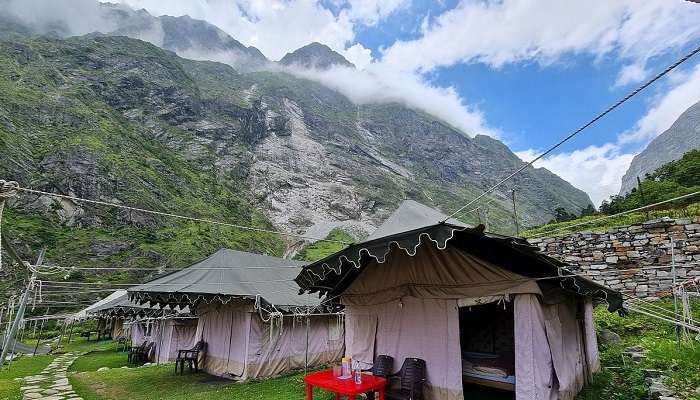
Staying in camps is, surely, among the best choice choices you can make, especially when you are visiting Badrinath. Amidst hills and greenery, you can have a new and memorable experience here. The top amenities are provided here- so you may not need to worry. The services, here, are quick and seamless. If you are planning for an accomodation that is different from a resort or hotel, you know what to book- Blue Poppy Swiss Cottage Camps.
Location: Helipad Ground, Ghangaria, Uttarakhand 246443
Related Post: Badrinath Vs Kedarnath
4. Hotel Auli D
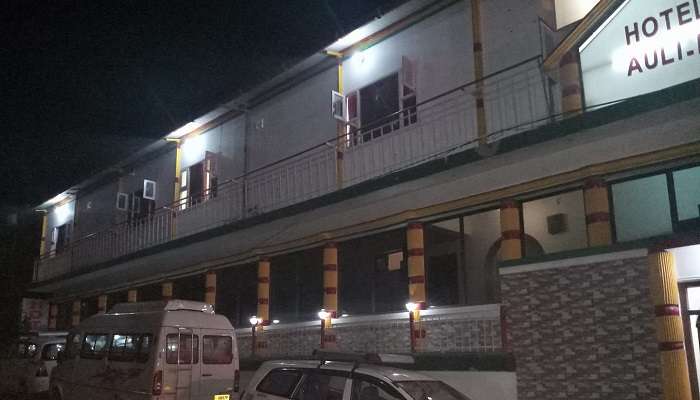
If you are looking for budget-friendly stays in Badrinath, Hotel Auli D can be your go-to choice. It offers seamless services and amenities, making your stay comfortable. This accomodation option offers delicous food, 24/7 help-desk, and more services. You must know that the hotel is a suitable location if you wish to expore Joshimath, Auli, and Badrinath.
Location: Badrinath Road, Near Petrol Pump, Joshimath, Uttarakhand 246443
5. Tathastu Maitri Ski Resort

Among the luxury properties in Badrinath, Tathastu Maitri Ski Resort, is a perfect choice for those seeking exclusivity. The seamless facilities and services make travellers’ vacation comfortable. The views of mountains and greenery from the location make the hotel perfect choice for all. So, if you are on a lookout for accomodation options in and near Badrinath, Tathastu Maitri Ski Resort is your stop.
Location: Ravigram Village, Near Fire Brigade Station Tapovan, Road, Joshimath, Uttarakhand 246443
Related Post: Hotels In Badrinath
6. Hotel Dhanesh
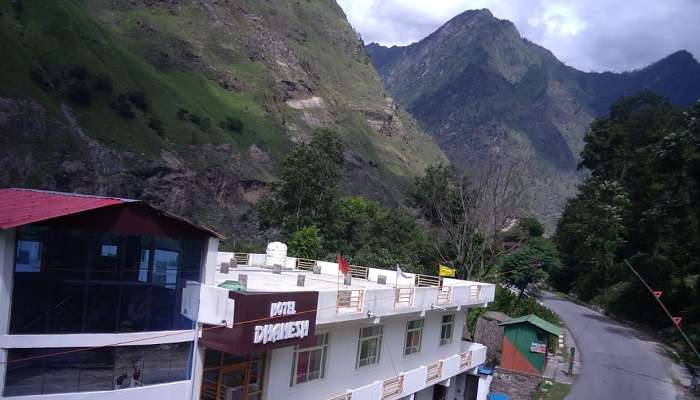
Hotel Dhanesh is situated in Joshimath. The 4-star property provides excellent amenities and services to ensure your satisfaction. Here, guests can have a memorable time while sightseeing the hills and basking in nature. The scenic views, lip-smacking food, and effective services make this place a good place to stay in Joshimath. It is recommended to do the bookings in advance to avoid last-minute hassle.
Location: Marwari, Joshimath, Uttarakhand 246443
You May Also Like To Read: Homestays In Badrinath
Now that you have a complete guide to the Badrinath temple and the snowfall in Badrinath Dham visit this exotic Hindu pilgrimage site to experience solace and divinity. Plan a trip to Uttarakhand to embark on a spiritual journey amidst the Himalayas. Don’t wait any further. Book your tickets now.
For our editorial codes of conduct and copyright disclaimer, please click here.
Cover Image Source: Shutterstock
Frequently Asked Questions About Snowfall In Badrinath
How much time will be required to cover Badrinath Dham?
You can cover the town of Badrinath in about 2 days.
What to wear in Badrinath during snowfall?
Located close to the mountains, snowfall in Badrinath and Uttarakhand asserts cold weather to the state. It is best to carry warm clothes while you visit Badrinath Dham in Uttarakhand.
What are some tourist attractions in Uttarakhand?
Uttarakhand is a paradise to visit, with beautiful mountain ranges, hills and valleys. Some of the best destinations include Rishikesh, Haridwar and Dehradun. You can witness some of the most beautiful lakes, temples and mountains in the state of Uttarakhand.
When is the best time to visit the town of Badrinath?
The doors of the temple open for six months in the year. The head priest decides the time of the temple's opening and closing. It is better to have a proper update while you plan a Trip to visit Badrinath Dham.
What are some of the best accommodations to stay in Badrinath?
Some of the best resorts and hotels in Badrinath that offer a pleasant and comfortable stay to its guests are Tathastu Maitri Ski Resort, Hotel Dhanesh, and Blue Poppy Swiss Cottage Camps.
Which is the nearest airport to the Badrinath Dham?
The nearest airport to the Badrinath Dham is the Jolly Grant International Airport in Dehradun. The airport is at a distance of about 315 km from the Badrinath Dham.
When can I witness snowfall in Badrinath Dham?
The snowfall in Badrinath Dham can be witnessed all-round the year due to the presence of snow laden Himalayas. Although, most of the snowfall at Badrinath Dham occurs in winter.
People Also Read:
Snowfall In Kufri Snowfall In Manali Snowfall In Chail

Innovative Content Writer Focused on Producing High quality, Original Content that drives traffic and engages readers. Experienced in Content strategy and analytics to measure content performance using tools such as SQL, Power BI, Excel.











